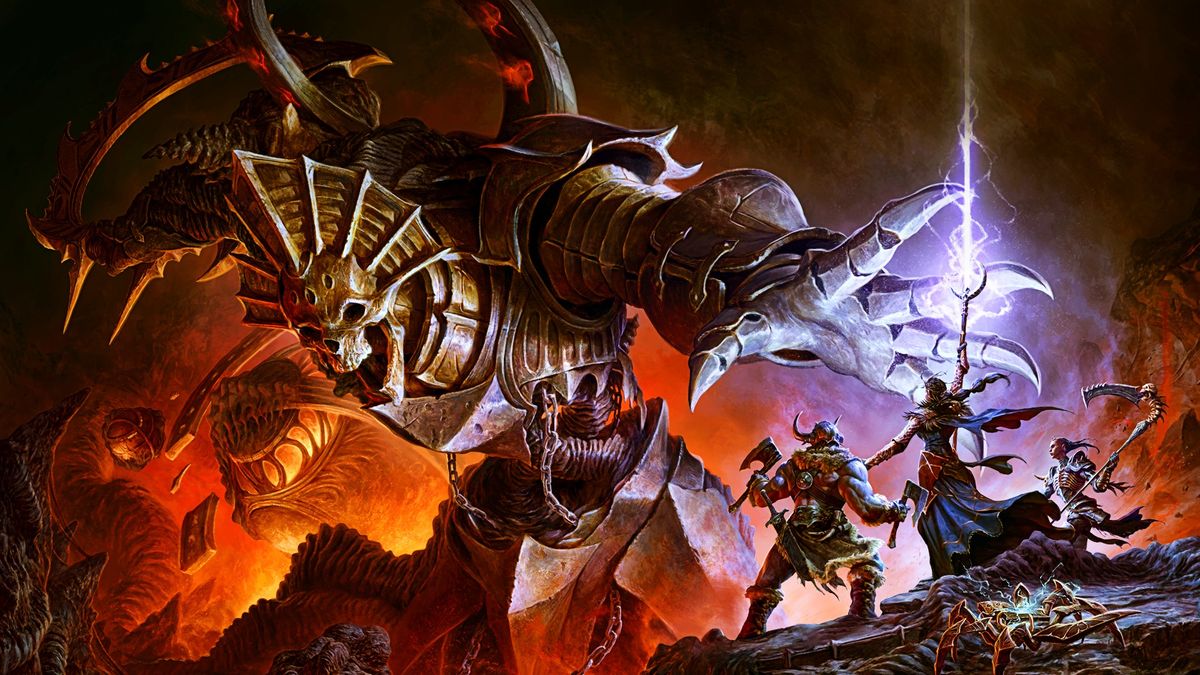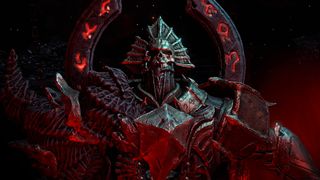Blizzard explains Diablo 4 Season of the Construct, "a lot of learnings" since launch, and why some highly requested changes may take until Season 5
Interview | Season 3 continues the action-RPG's “ideological shift”

Next up is Diablo 4 Season of the Construct, the action-RPG's third offering of new content and tweaks to the existing formula. We bid farewell to the vampires that ruled Season 2 as we head back to Kehjistan for Season 3. A powerful demon called Malphas has corrupted an ancient device created by Zoltun Kulle of Diablo 3 fame called 'The Loom,' leading to a swarm of rampaging mechanical Constructs.
The new quest has no connection to the seasons before it, and that's by design for now. Blizzard wants to forgo building on one story from season to season or planting narrative seeds so that you may jump into the Vessel of Hatred DLC without feeling like you had to play anything following the base game.
"So far, the philosophy has been to approach each season separately," quest designer Nathan Scott says. "One thing we feel strongly about is, if you miss a season, it's okay. We want you playing and the content we're producing – I'm biased, but I think it's pretty great. But, if you jump in [Season 1] and miss Season 2, it's not the end of the world, we don't want you to feel like you're missing out on important story chunks."
If you build it

Through all of this, Diablo 4 is a different beast these days. Since launching last year, broken builds have been allowed to rule should they not actually break the game, once-mythical loot is now obtainable, and more learnings have made Sanctuary a better place to be as each new season of content contains some degree of learning from what came before.
One of the standout editions of Season 3 is a companion called the Seneschal – a construct itself that acts as the new primary power gain system for this season. You can tweak the puppet-like contraption through the management UI to assist in battle by buffing your current damage build, tanking damage from foes, or even just healing your character.
Blizzard says you can customize your Seneschal through 12 unique Governing Stones and 27 different Tuning Stones of varying rarities, all of which can be upgraded. While the idea of companions in Diablo may call to memory Hirelings or Followers from previous games, Blizzard believes the Seneschal's progression path makes it more robust than what's come before.
"It's not just 'you choose a couple of pieces of equipment, or you choose a skill,'" lead game producer Timothy Ismay explains. "You have a pretty robust quantity of options of different skills that you can add and combine. And then, more importantly, there are upgrades that you can place on the skills that pretty dramatically change how they function so that you can get very, very different builds out of them. And then, by obtaining more loot – Governing Stones and Tuning Stones – you can level those up to be stronger and stronger.
Sign up to the 12DOVE Newsletter
Weekly digests, tales from the communities you love, and more
"So there's an actual progression path for this companion specifically, which, because of how powerful it is, you're going to pursue in the late game. Honestly, even just in the one-to-50 experience in Season 3."
The Seneschal is part of what you get in Season of the Construct. The other is the new dungeons – Vaults – where you'll find the contraptions. Filled with a new type of trap called Hazards, Blizzard teases deadlier evils you need more complex skills to avoid.
The promise of greater loot lingers, too. You start each encounter with a Zoltun's Warding stacking buff that diminishes as you take damage from traps. The healthier the stack at the end, the greater the reward. You can also use Pearls of Warding to up the difficulty and reward in exchange for Zoltun's Warding.
For Blizzard, the new dungeon is the latest chance to put something forward to address pain points that have been present since the beta. Before launch, players voiced concerns that dungeon design was too similar and required more backtracking than they ought to – to which Blizzard said, "Don't be too quick to judge" while making tweaks based on the feedback. Nightmare dungeons have continued to receive tweaks into the game's life alongside Helltides, though events like Seasons allow the developer to try wilder ideas out as Diablo 4 continues to evolve.
"Seasons are, in my opinion, the perfect place for that experimentation," Scott says. "Because we can try new things. We can see what sticks and what doesn't stick. If it works, we can bring it back. If it doesn't work, then cool, it's ephemeral.
"So for Vaults specifically, one of the things we're looking at is how can we challenge players in new ways? How can we ask levels of mastery that we haven't asked of you before?"
Running The Gauntlet

Another new challenge for players to dip into with Season of the Construct is The Gauntlet, the latest addition to the endgame loop. The dungeon presents a static setup that rotates weekly, giving players something to master so they might earn a top spot on a leaderboard. If you land within the Top 10, the achievement earns you a place in the Hall of the Ancients.
Season 2 saw the introduction of an endgame pinnacle dungeon known as the Abattoir of Zir. Hopes were high for a challenging bout with an "impossible" end tier, though that soon faded with complaints of a frustrating grind. Blizzard made tweaks based on the feedback and says "a lot of learnings" were taken that won't be forgotten regarding future endgame content that builds on the sort of gameplay offered.
The feedback loop between player and developer is something Blizzard mentions frequently. Further into our interview, we talk about comments Diablo general manager Rod Fergusson made regarding the difference in how content is consumed against how it is made. Diablo 4's launch had the benefit of external beta feedback, though the unpopular Season 1 was made alongside the base game, so launch criticism wasn't fully reflected until Season 2 and 3.
While the need to be ahead will always cause some delay between feedback reception and implementation, Ismay and Scott reassure that they've implemented what fan feedback they could from Season 2 to Season 3 and that the accumulative experience of making each content drop only makes the team better.
"We're just now looking at the things we did well and want to keep doing, and we're just now looking at things we didn't do so well and we don't want to keep doing," Scott says. "Season 3 is out the door, so we can't really take Season 2 into Season 3. But we can take it into what we're developing now and what we're developing further in the future."
Ismay adds: "We have actually made a number of changes in Season 3 based on things we saw in Season 2, but there are limits. At a certain cutoff point it's like, 'We got to start putting that into Season 4 now. Or, if it's really big, maybe even in Season 5. Some things are significantly more expensive to implement than others."
Some of the adjustments Ismay mentions include Helltides always being one, excusing a five-minute break to reset every hour, an extra stash tab, and WASD controls for PC players.
Other lessons Blizzard has learned come from a relaxing design approach. Fergusson has previously spoken about embracing over instantly nerfing powerful builds that don't rely on something not working as it should, something Ismay admits represents an “ideological shift” from launch. While the team initially wasn’t keen on a single build “so overpowered that you can just one-shot” a boss, the feeling has eased. If a player “solves” the game by finding a powerful item combo the team has missed, you can enjoy that until the next season at least.
Another area Blizzard has relaxed the reins is loot itself, with some of the best gear now accessible to most. Ismay explains that plenty of Diablo 4's own developers ran into the issue when playing through the loot 'em up for themselves – plenty would get to the endgame after fully leveling up only to find that what would really complete a build was an Uber Unique, something you couldn't devotedly farm for at one point.
"That was the idea behind the endgame bosses that we added in Season 2," Ismay says. We wanted to give players a way to target farm Uniques and, eventually, if you can find Duriel, Uber Uniques – the most powerful possible items that could drop. So we did want to make that more accessible to players but also more intentional, like players are saying, 'Hey, I've done the other stuff. I specifically want to get Uber Uniques now; what can I do that it's going to be targeted towards that?'"
Ismay goes on to share that the big bad of Season 3, Malphas, forms part of that loop. Once you've bested the demon in the seasonal questline, you can fight a level 85 version of them to harvest materials you can use to fight Duriel.
Season of the Construct offers plenty of new content and tweaks based on lessons learned, then. However, how it all lands and influences the future remains to be seen. With Diablo 4 Season set to launch on January 23, we don't have long to wait.
Diablo 4 player settles the debate over which class is strongest with a Druid build that deals over a trillion damage.
Iain joins the GamesRadar team as Deputy News Editor following stints at PCGamesN and PocketGamer.Biz, with some freelance for Kotaku UK, RockPaperShotgun, and VG24/7 thrown in for good measure. When not helping Ali run the news team, he can be found digging into communities for stories – the sillier the better. When he isn’t pillaging the depths of Final Fantasy 14 for a swanky new hat, you’ll find him amassing an army of Pokemon plushies.












